Most of us benefit from having systems in place. This is true about almost any activity or pursuit, fly angling included. When variables arise, whether expected or unexpected, having systems in place allows us to methodically troubleshoot our way to a solution. And, if our system is well-designed, hopefully that solution is the optimal one. Over the years, I’ve developed systems I use to solve any number of questions I encounter on the river: what rod to use on any given day, how to construct my leader, how to dress, and how to choose what fly pattern to tie on—including streamers.
There is no shortage of fly characteristics to consider when choosing a streamer—color, size, the presence of flash or other features designed to attract fish, whether the fly is articulated, and more. All of these considerations matter. But, in truth, these characteristics exist in streamers of all shapes and sizes. It’s rarely adequate to choose a streamer just because it’s flashy, or articulated, or black.
Whether a trout takes a swipe at a streamer out of aggression or simply out of hunger, it’s more likely to do so to a fly that’s closer to its position in the water column (its “strike zone”) and that is animated by the angler in a way that is appropriate given what we’re able to ascertain about the trout’s behavior. In other words, where are the trout and what are they doing?
In my experience, the answer to this question is most often determined by a combination of factors: water temperature, water clarity, and what we can discern about fish activity.
Is the water extremely cold, leading to sluggish fish holding near the bottom—requiring you to fish deep and slow? Are the fish in pre-spawn mode, staging in the shallows—leading to aggressive fish that will attack a fast-moving fly in shallow water? Is it springtime, with hungry trout hunting along the riverbanks? Is the water off-color, limiting the fishes’ visibility—requiring you to slow the fly’s action to give the fish more time to react?
More Like This
As with all types of flies and methods of fly fishing, when fishing streamers, a fish is more likely to take a swipe at your offering if it is a well presented fly. Whether a streamer is well presented is most often determined by the depth of your fly in the water column and the type and speed of your retrieve.
Unlike when fishing dries or nymphs, however, the success of your streamer presentation is significantly impacted by which fly you choose. Some streamers are designed to sink faster than others, some to cut through the water with speed and grace, and some to move erratically—to imitate wounded prey and trigger a feeding response. How well you can present your streamer is determined, by and large, by what it’s designed to do.
So, how do you choose the right streamer? If you’re like me, you use a classification system—one that divides the world of streamers into three streamer types based primarily on sink rate (and thus the depth of your fly in the water column) and how it is meant to be fished (and the type and speed of your retrieve).
Jigs
Jigs are head-heavy patterns (often, but not always tied on jig-style hooks) that are designed to drop quickly in the water column and be fished with a slow retrieve. Patterns with dumbbell eyes (like a Clouser minnow) are examples of jig patterns. These flies’ heavy heads serve two purposes. First, the weight helps the fly drop quickly into the trout’s strike zone. Second, the weight on the front end helps create a jiggy “up and down” movement during the retrieve. These patterns areoften fished best with a floating or slow-sinking line where the fly’s position in the water column (after sinking) is well below the level of the fly line. This separation in height between the line and fly helps create the “jiggy” up-and-down movement. It’s also why regular floating lines work so well with jig-style streamers.
These patterns are not designed to be fished fast. Let the streamer sink well below the fly line, make a short strip that pulls the fly upwards toward the fly line, followed by a pause to allow the streamer to drop back. Then, repeat the process to keep the up-and-down presentation going. Think of jigging as slow-grinding your pattern near the stream bottom.
In my experience, jigs work best when visibility is limited and trout activity is low (e.g. during extreme cold weather conditions). My favorite cold season streamer approach employs a floating line, long 9’, 2X leader, and a heavy dumbbell-eyed streamer pattern.
Swimmers
I classify swimmers as patterns designed to move quickly through the water with a fast or continuous retrieve. Often, the best swimmers are not bulky or are constructed of materials that shed water, allowing the fly to glide through the water with minimal resistance. What you don’t want is a pattern containing materials that soak up water like wool. While water-absorbing materials like wool will help sink a fly, those flies also move sluggishly through the water (instead of gliding through it). If you’ve ever felt like you’re stripping a wet sock through the water, chances are you were fishing a fly constructed out of water-absorbing materials.
Patterns like a traditional wooly bugger (with or without a conehead) or the new Gamechanger-style patterns are good examples of swimmers. Swimmers are best fished with a fast retrieve high in the water column. They’re great choices when you want to fish tight to the bank—when you’re trying to play takeaway with a large predatory trout hunting in the shallows. While these patterns can be fished with a floating line, often a slow sinking or intermediate helps keep the pattern below the surface during a faster paced retrieve.
Hanging (aka Buoyant) Streamers
While I more often find myself fishing swimmer and jig style streamer patterns, hanging style streamers have their place, especially when trout activity is on high alert. These streamers are often created with deer hair, which adds buoyancy. Patterns like Tommy Lynch’s Drunken Disorderly or Kelly Galloup’s Zoo Cougar are two examples of hanging style streamers. Due to their high buoyancy, these patterns are best fished using a sink tip or full-sinking line, as the weight of the line keeps these buoyant streamers anchored below the surface. Your retrieve when fishing hanging streamers should be similar to when fishing jig-style patterns—a pause is needed to allow the line to sink below the streamer before the retrieve. The combination of the weighted line pulling downward and the buoyant nature of the streamer pulling upwards creates an erratic up-and-down motion, imitating a wounded baitfish. Though fishing a sinking line and buoyant streamer does require some getting used to, this combination does an amazing job imitating wounded baitfish. As with swimmer-style streamers, hanging streamers work best when trout are actively hunting, especially during low light periods or when large predatory trout are on the hunt.
Wrapping up
By lumping your streamers into these three types, you can effectively choose the right fly for almost any conditions. What type of streamer you want to fish should be the first question you ask yourself. Once you’ve answered that, then you can worry about the little things in life—like color or whether the fly has rubber legs, flash, a cone or sculpin head, and so on. Sprinkle in a bit of experience and local knowledge, and you’ll be well on your way to choosing the right weapon.





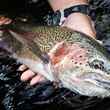
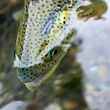




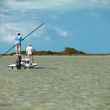



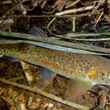



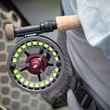









Comments
David Genrich replied on Permalink
This was great information and detail. Concise and too the point. I will be referencing this article in the future.
Anonymous replied on Permalink
Thank you, best article I’ve read on the subject!
Pages